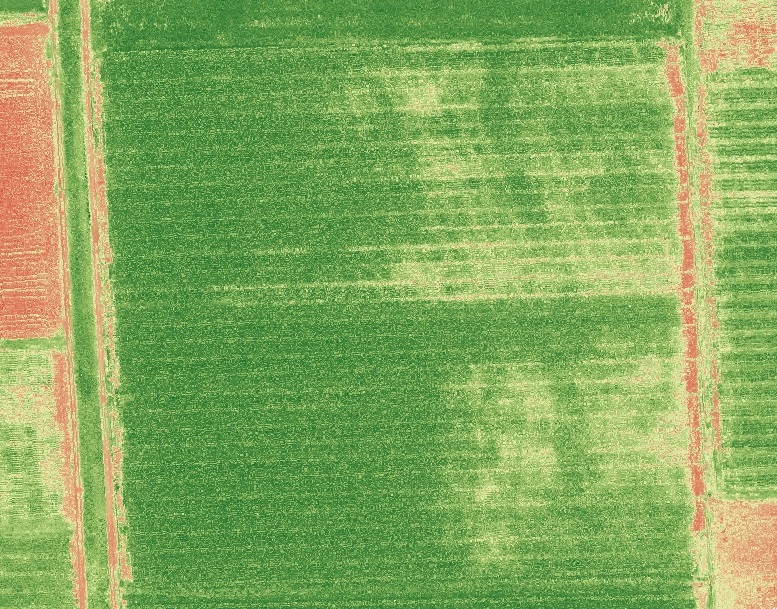

The agricultural sector is increasingly turning to technology-based solutions to monitor plant health and increase yields. One of these solutions is indices that provide important information on plant health. In this article, you will learn more about NDVI (Normalised Difference Vegetation Index), MSAVI (Modified Soil-Adjusted Vegetation Index), VARI (Visible Atmospherically Resistant Index) and GNDVI (Green Normalised Difference Vegetation Index), four important plant health indices commonly used in agriculture.
NDVI (Normalised Difference Vegetation Index)
NDVI is one of the most widely used indices for assessing plant health. This index measures the reflectance of red and near infrared light by plants. NDVI provides information about the ability of plants to photosynthesise and their overall health. NDVI is calculated by the following formula:
Where NIR represents reflectance in the near infrared region and Red represents reflectance in the red region. The NDVI value usually ranges between -1 and +1. Positive NDVI values indicate healthy plants, while negative values may indicate water or unfavourable growing conditions.
MSAVI (Modified Soil-Adjusted Vegetation Index)
MSAVI is another index used to assess plant health and foliage level. MSAVI is similar to NDVI, but includes a correction that corrects for the influence of the soil surface. This helps to more accurately assess plant health by taking into account the reflection properties of the soil surface. MSAVI is calculated with the following formula:
The MSAVI value also ranges from -1 to +1, with positive values indicating healthy plants.
VARI (Visible Atmospherically Resistant Index)
VARI is another index used to assess plant health. VARI uses reflectance values in the visible light region and reduces the influence of atmospheric conditions. This helps you get more reliable results on cloudy or foggy days. VARI is calculated by the following formula:
Green represents the reflectance in the green region, Red the reflectance in the red region and Blue the reflectance in the blue region. The VARI value indicates plant health and foliage level.
GNDVI (Green Normalised Difference Vegetation Index)
The GNDVI uses the green zone to assess plant health and more precisely measures the level of greenness of plants. GNDVI is calculated with the following formula:
NIR represents reflectance in the near infrared region and Green represents reflectance in the green region. The GNDVI value also ranges from -1 to +1, with positive values indicating healthy greens.
These four indices are powerful tools for monitoring plant health and productivity in agriculture. Which index to use will depend on the requirements and environmental conditions of a particular application. However, these indices help agricultural professionals make better decisions and optimise plant health.
Get in touch with us!
Do not hesitate to contact us to learn more about the latest developments in agricultural technologies and to get detailed information about the products and services offered by Agrovech. You can visit our website at www.agrovech.com or use the contact details below to contact us directly:
- E-mail: [email protected]
- Address: Sakarya Teknokent Esentepe Mahallesi Akademiyolu Sokak Technology Development Zones
Building:2 – ROSEM No:21
As Agrovech, we continue to offer smarter, more sustainable and more efficient solutions in the agricultural industry. We are happy to help you and contribute to the agriculture of the future. Contact us to offer customised solutions for your needs and let’s shape the future of agriculture together!


Hello there, just became aware of your blog through Google, and found that it is truly informative. I’m going to watch out for brussels. I’ll be grateful if you continue this in future. Numerous people will be benefited from your writing. Cheers!